Das Schreiben als Kunstfertigkeit
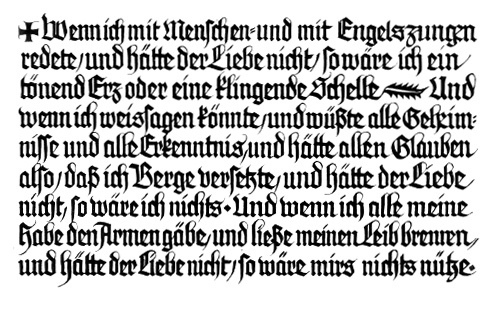
About a year and a half ago, I purchased a copy of Das Schreiben als Kunstfertigkeit online. A German book on calligraphy, perhaps the German book on calligraphy, DSaKf (an acronym I just made up…) was written by Rudolf Koch during the early 1920s. The book’s title could be roughly translated as: “Writing as a Technical Skill.” The book is subtitled (again, this is a rough translation) “a complete introduction to the learning of the writing styles necessary for the profession of calligraphy.” The first edition of DSaKf was published in 1925. Several editions followed. The following summary is based on the third edition, which was published in 1934 by the Verlag des Deutschen Buchgewerbevereins Leipzig (the Publishing House of the German Book Trades’ Organization in Leipzig).
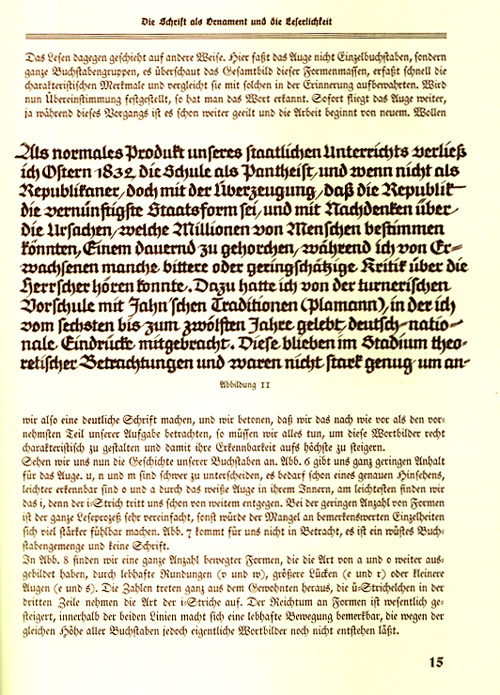
The book block is a bit larger than A4. It contains 96 pages (including 23 pages of black and white photographs). The entire book is set in blackletter. The body text is in a Fraktur that might be Koch’s Frühling, but I can’t verify this yet. The bolder tiles and subtitles are set in Koch’s Maximilian, which is not exactly a Fraktur, but rather a combination of Fraktur, Schwabacher, and Gotisch (Textura). There is not color in the book. All of the text and imagery is black, on off-white paper.
Aside from calligraphic instruction, DSaKf has a chapter on book design and binding, a chapter on the making of diplomas and certificates, and an appendix that details the proper writing and the development of die Offenbacher Schrift (the Offenbach Hand), a Kurrent-style handwriting system for school children not to be confused with the Sütterlin hand.
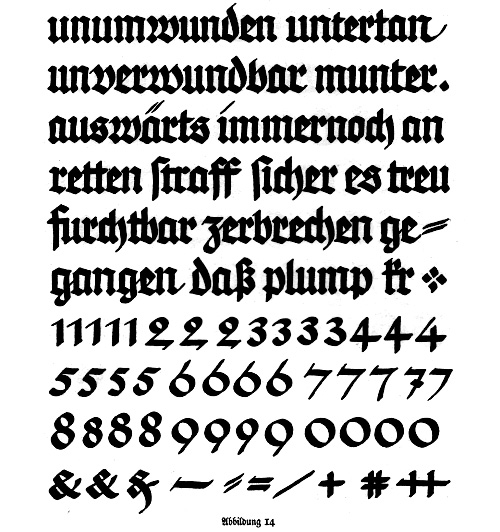
Anyone who ever wondered how Rudolf Koch formed his letters with a broad pen can learn that from this book quite quickly and easily, thanks to the well-formed illustrations. The book only covers how to write in other styles through textual explanation, rather than through imagery, except the schoolchildren’s script in the appendix. There are also a various other styles depicted in the 23-pages of photographic reference at the back of the book.
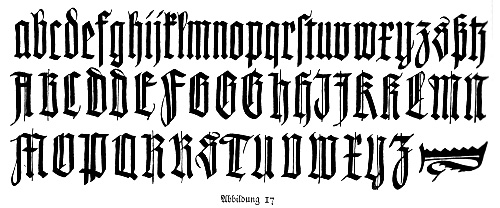
Critique
The German critic Hans Peter Willberg (1930–2003), wrote in Typolemik that all of Koch’s students were trained to basically just copy his style, instead of to develop new writing forms. Reading this book, I get that impression, too. It is important to remember that—especially with calligraphy—there can never be a “one size fits all” approach. The book’s own subtitle states that the book will instruct all manners of necessary hands. Yet real blackletter-variations are not covered. Neither are Antiqua or Grotesk, two styles that were regularly used in 1925 Germany.
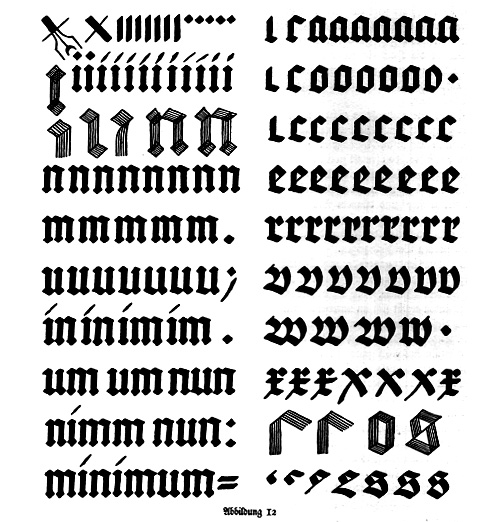
Some calligraphers believe that Koch’s interpretation of how the pen should be held is false. Koch implies in this book that the pen should be held so that the nib stays at a 45-degree angle. Edward Johnston had written earlier that the pen should be held so that nib is at a 30-degree angle.
Conclusion
This is an invaluable book. Even if you cannot read German (or even if you can, but cannot read Fraktur), this book should be respected for the careers it launched. Many calligraphers in the decades after 1925 learned invaluable lessons from Das Schreiben als Kunstfertigkeit’s pages. Together with Edward Johnston’s Writing and Illuminating & Lettering, you have about all the calligraphy books your library might ever need. DSaKf seems to sum up Koch’s ideas about writing, and Koch is consistently held by typographers and calligraphers as one of the greatest masters of western calligraphic tradition. If you want to learn to write like Koch, this is the source. The images are understandable even without German fluency.
The book is readily available in German antiquaries and used book stores. Try searching them with the website ZVAB.com or Abebooks.com. Both site have full English functionality, and the listed sellers often ship to anywhere in the world.